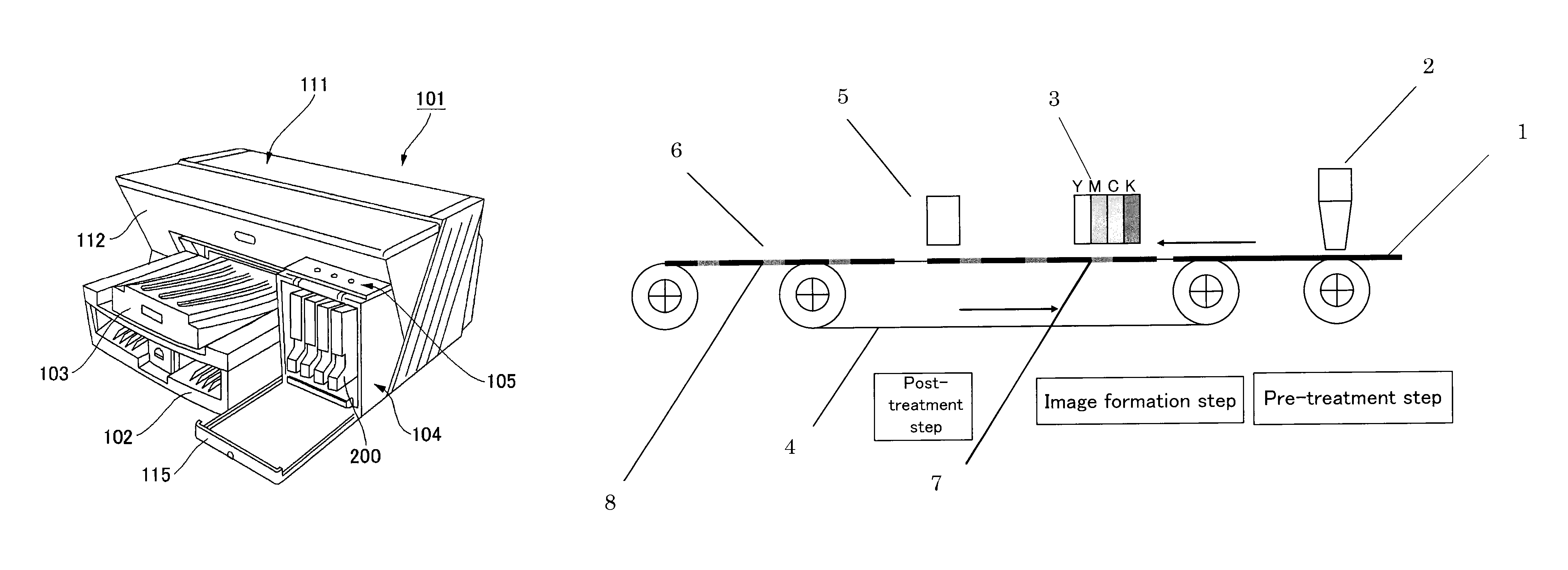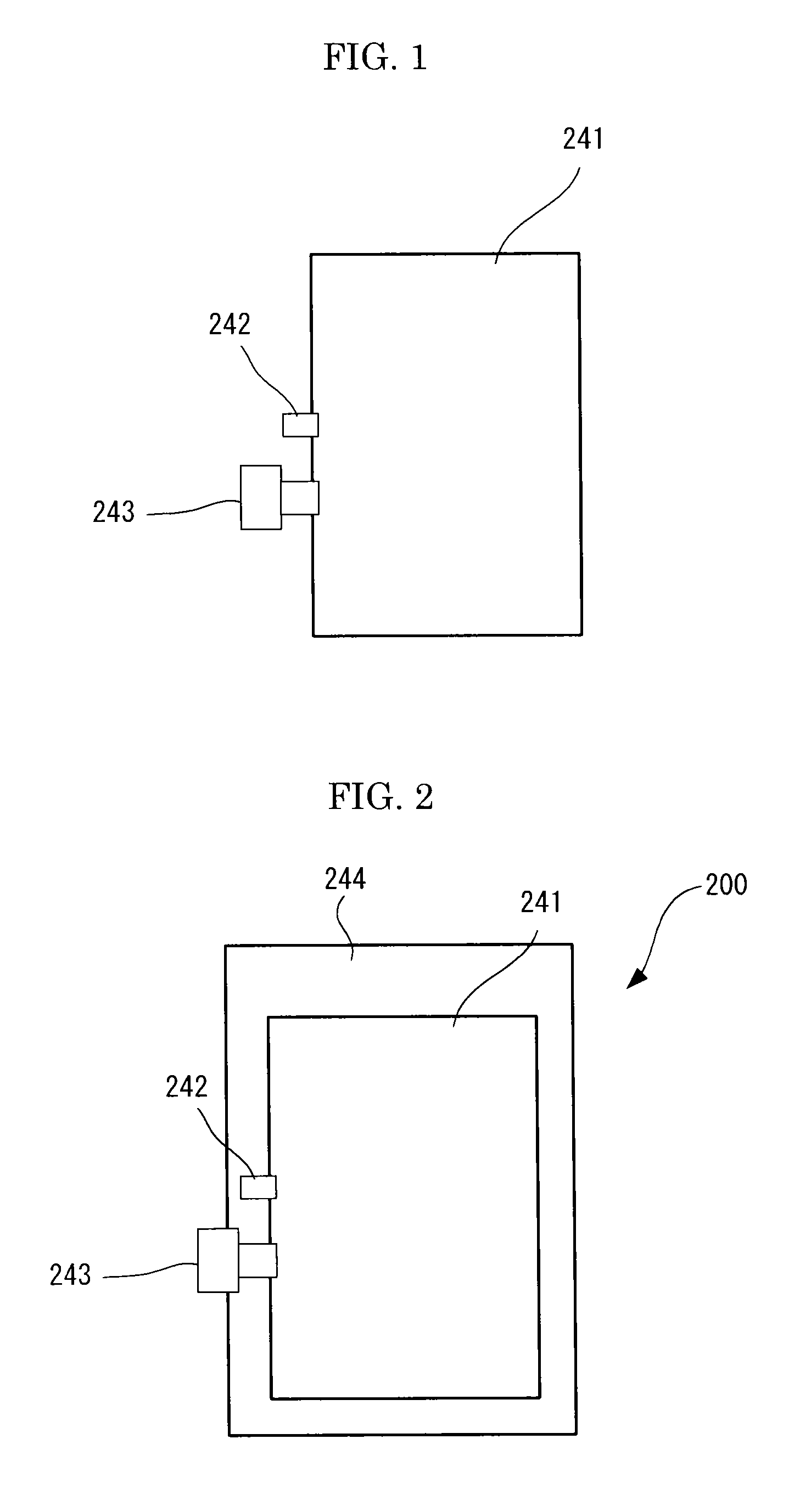Inkjet recording method and inkjet recording device
a recording method and inkjet technology, applied in the direction of inks, instruments, coatings, etc., can solve the problems of blurred image, inability to meet the requirements of inkjet recording at all, and significant reduction of image quality, and achieve excellent drying performance of ink, high speed, and high quality full-color recording
- Summary
- Abstract
- Description
- Claims
- Application Information
AI Technical Summary
Benefits of technology
Problems solved by technology
Method used
Image
Examples
first embodiment
—Water-Dispersible Colorant of
[0137]The water-dispersible colorant of the first embodiment is a pigment whose surface has been modified so that at least one hydrophilic group is, directly or via another atom group, bonded to the surface of the pigment. To achieve the surface modification, for example, the following methods are employed: a method in which a specific functional group (functional group such as a sulfone group and a carboxyl group) is chemically bonded to the surface of a pigment, or a method in which the surface of a pigment is subjected to wet oxidization treatment using at least one of a hypohalous acid or a salt thereof. Among them, preferred is an embodiment where a carboxyl group is bonded to a surface of a pigment, and the pigment is dispersed in water. As the pigment is surface modified in the aforementioned manner, and a carboxyl group is bonded to a surface thereof, not only the dispersion stability but also higher print quality can be obtained, and the water ...
second embodiment
—Water-Dispersible Colorant of
[0167]In the second embodiment, the colorant is a pigment dispersion containing a pigment, such as an inorganic pigment, an organic pigment, and a complex pigment, a pigment dispersing agent, and a high molecular dispersion stabilizer, where the high molecular dispersion stabilizer is at least one selected from the group consisting of an α-olefin-maleic anhydride copolymer, a styrene-(meth)acryl copolymer, a water-soluble polyurethane resin, and a water-soluble polyester resin.
[0168]The high molecular dispersion stabilizer is a material effective for stably maintaining a dispersion state of a pigment dispersion, which is finely dispersed in water with a pigment dispersing agent. The α-olefin-maleic anhydride copolymer, styrene-(meth)acryl copolymer, water-soluble polyurethane resin, and water-soluble polyester resin are solids at room temperature and hardly dissolve in cold water. They however exhibit an effect as a dispersion stabilizer, when they are ...
third embodiment
—Water-Dispersible Colorant of
[0184]As for the water-dispersible colorant of the third embodiment, in addition to the pigment, use of a polymer emulsion, in which a pigment is contained in polymer particles, is preferable. The polymer emulsion, in which a pigment is contained in polymer particles, is a polymer emulsion, in which a pigment is encapsulated in polymer particles, or a polymer emulsion, in which a pigment is adsorbed on surfaces of polymer particles. In this case, all of the pigment particles are not necessarily encapsulated or absorbed in or on the polymer particles, and the pigment particles may be dispersed in the emulsion as long as they do not adversely affect the obtainable effect of the present invention. Examples of the polymer (polymer of the polymer particles) for forming the polymer emulsion include a vinyl-based polymer, a polyester-based polymer, and a polyurethane-based polymer. Among them, preferred are the vinyl-based polymer and the polyester-based polym...
PUM
| Property | Measurement | Unit |
|---|---|---|
| contact time | aaaaa | aaaaa |
| temperature | aaaaa | aaaaa |
| dynamic surface tension | aaaaa | aaaaa |
Abstract
Description
Claims
Application Information
 Login to View More
Login to View More - R&D
- Intellectual Property
- Life Sciences
- Materials
- Tech Scout
- Unparalleled Data Quality
- Higher Quality Content
- 60% Fewer Hallucinations
Browse by: Latest US Patents, China's latest patents, Technical Efficacy Thesaurus, Application Domain, Technology Topic, Popular Technical Reports.
© 2025 PatSnap. All rights reserved.Legal|Privacy policy|Modern Slavery Act Transparency Statement|Sitemap|About US| Contact US: help@patsnap.com



